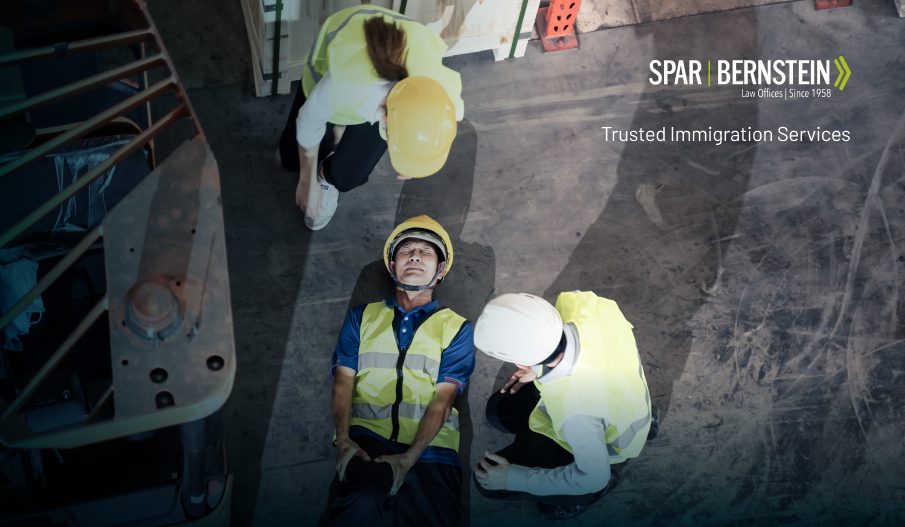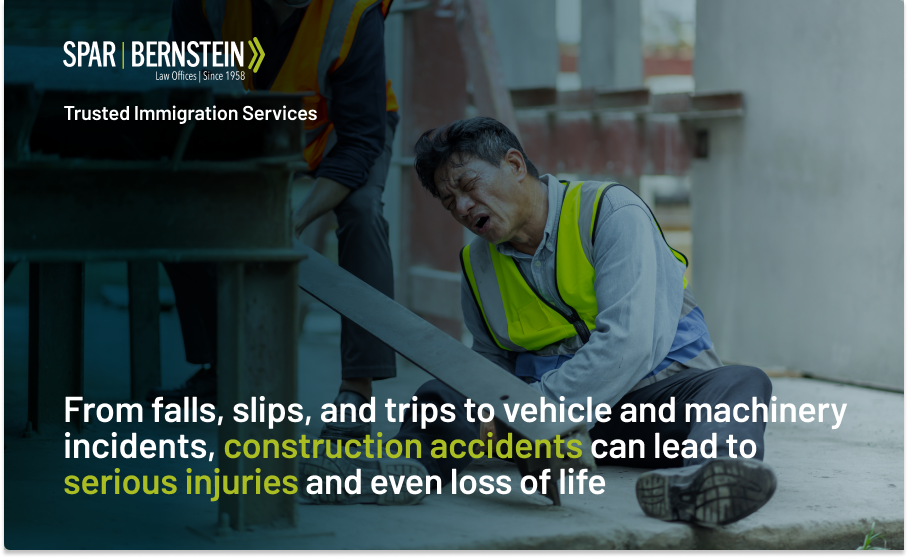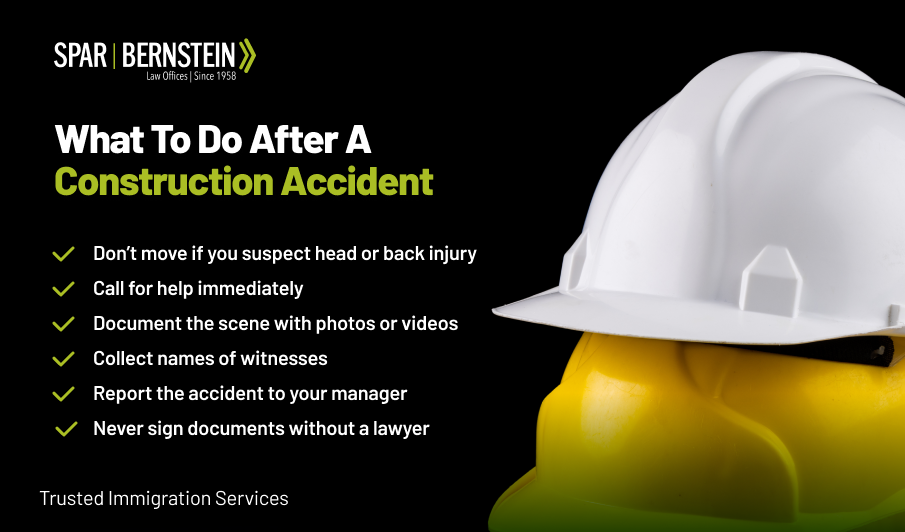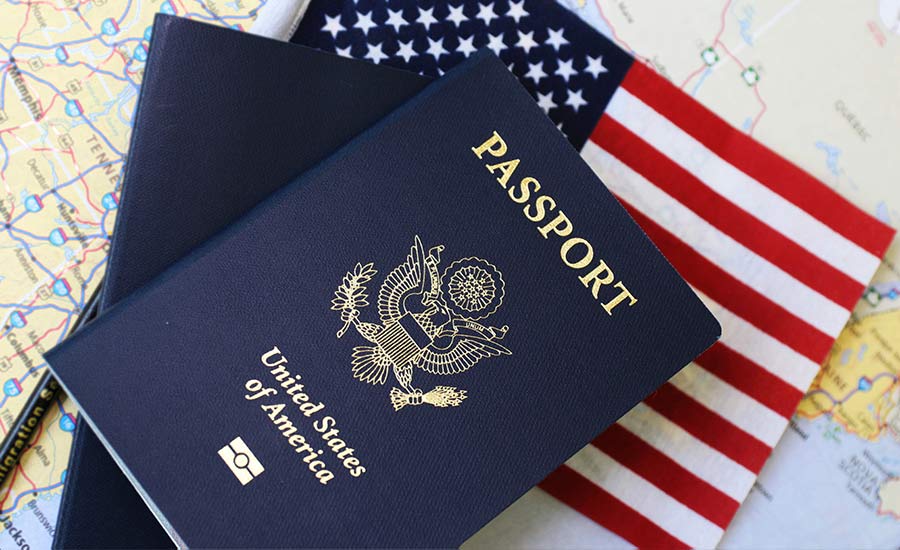

Construction Injuries: Key Takeaways
- Common construction injuries include fractures, head and brain injuries, back and neck injuries, burns, chemical illnesses, and electrocution
- They can be caused by falls, slips, machinery accidents, trench collapses, falling debris, fires, and exposure to toxins
- After an accident, call for medical help, document the scene, report it to your manager, and contact a lawyer
- If you sustained injuries on a construction site, you may receive workers’ compensation or file a personal injury claim against third parties
With over 8 million workers, construction is one of the largest and most dangerous industries in the United States.
Every day, these workers face risks that can lead to serious construction injuries. If it’s you or someone you love who’s been hurt, knowing what to do next becomes critical.
In this guide, we’ll break down:
- The most common construction injuries
- Causes for construction accidents
- What to do after a construction accident
- Legal ways to seek compensation
Spar & Bernstein is ready to fight for the compensation you deserve
Common Construction Site Injuries
From scaffolding to demolition tools, construction sites are packed with equipment, and with risks related to demolition, excavation, roof laying, carpentry, and welding.
Add in extreme weather, and injuries become a likely part of a long list:
Physical Injuries
These are the most immediate and visible, ranging from minor ones like sprains to catastrophic ones such as broken ribs, back and neck injuries, spinal cord injuries, and lost limbs.
Head, Eye & Internal Injuries
These injuries affect critical systems and senses, often with long-term impacts:
- Head and brain trauma
- Eye injuries or vision loss
- Strokes
Exposure-Related & Environmental Injuries
These result from conditions on-site, including environmental factors and chemical exposure:
- Burn injuries
- Electrocution
- Suffocation
- Chemical illnesses
- Dehydration
- Heat-related conditions
Causes Of Construction Injuries
While activities on a construction site differ, the most common causes for construction accidents include:
1. Falls
Falls can happen from high structures, such as roofs, ladders, scaffolding, or chimneys. They account for 48% of the serious injuries and for 38.5% of all construction site fatalities, along with slips and trips.
The severity of the injury depends on the height of the structure and the conditions surrounding the fall, for example, if the worker used safety equipment.
2. Slips Or Trips
Scattered tools, slick floors, and uneven ground might seem like small hazards, until a worker takes a fall that ends in weeks of recovery.
3. Vehicle Accidents
Vehicle accidents may occur on highways and streets where construction work is underway, and traffic needs to be slowed down, rerouted, or limited.
Speeding or careless drivers can cause serious injuries and even fatal outcomes for the workers on the construction site.
4. Machinery Accidents
On a typical site, you’ll find powerful tools like cranes, saws, and bulldozers. They are all essential, but also dangerous if something goes wrong.
5. Trench Collapses
Trenches are often associated with new building construction or pipe and cable installation. Due to rain, improper sloping, or flooding, the soil can become unstable and trap construction workers, causing injury or even death.
6. Falling Debris
Falling debris, such as building materials, pieces of scaffolding, or tools, can result in head and brain injuries for employees on a construction site.
7. Fires And Explosions
An exposed wire, a hidden gas leak, or a carelessly thrown cigarette … It takes just one oversight for a fire to start, putting every nearby worker at risk.
8. Overexertion
Working long hours in unfavorable conditions, such as extreme heat, cold, and humidity, can lead to heat strokes, dehydration, muscle strains, or joint injuries.
9. Electrocution
Contact with power sources or overhead power lines is a major hazard on construction sites. When equipment or machinery strikes live wires, it can result in electrocution, severe electrical burns, nerve damage, cardiac arrest, or even death.
10. Exposure To Toxins Or Dangerous Chemicals
Whether it’s asbestos in old buildings or harsh cleaning agents, prolonged exposure can damage lungs, irritate skin, and have lasting health effects.
11. Repetitive Motion
Performing repetitive construction tasks can result in negative impacts on the body over time, particularly on the joints, wrists, or ankles.
12. Improper Loading And Unloading
One wrong move while unloading a heavy beam, and you may find yourself knocked off balance or experiencing serious back strain.

What To Do After A Construction Accident
Acting immediately after you have been injured in a construction accident can shape your recovery. It can also be key if you decide to file a personal injury claim.
After you experience a construction accident:
- Don’t move if you suspect a head or back injury.
- If you’re able, call for help right away. EMTs will treat injuries but also document the scene, which can later support your case.
- If possible, take photos or videos of the accident site and your injuries. If you cannot do it on your own, ask a colleague to do it for you.
- Take note of the witnesses to your accident.
- Inform your manager about the accident by giving essential details only.
- Do not communicate with the safety inspector on site: this can affect your chances of pursuing fair compensation in the future. Typically, safety inspectors work closely with insurance companies.
- Do not sign anything without consulting a personal injury lawyer you trust.

Can You Get A Compensation For Your Construction Injuries?
After being hurt on a construction site, you have the right to receive workers’ compensation and file a personal injury claim against the third parties that you hold responsible for your accident.
Workers’ Compensation
Mandatory insurance in most states and paid by your employer, workers’ compensation typically covers medical costs, wages, and disability benefits for employees who suffer job-related accidents. The benefits may vary from state to state.
Receiving workers’ compensation typically deprives you of the right to sue your employer.
However, there are exceptions. If the accident happened while under the influence or in violation of company rules, workers’ comp benefits may not apply.
The same is valid if your injuries were self-inflicted or if they occurred while you were on your way to or from work.
A mandatory insurance in most states, paid by your employer, workers’ compensation typically covers medical costs, wage and disability benefits for employees who suffer job-related accidents. The benefits may vary from state to state.
Personal Injury Claims Against Third Parties
Although you are not permitted to file a personal injury claim against your employer, you have the right to sue third parties that may be responsible for your construction accident.
That could mean a careless contractor, a negligent architect, or even a city agency that failed to enforce safety codes.
Filing a claim after a construction accident allows you to seek various types of damages in a personal injury case, including:
- Economic damages, such as medical bills, lost income, lost future earnings, or household expenses
- Non-economic damages, such as pain and suffering, loss of enjoyment of life, loss of consortium, or mental anguish
- Punitive damages, if your injury resulted from the grossly negligent behavior of a responsible party
A construction accident lawyer can help you determine the best course of action and guide you throughout the injury settlement process.
How Can Spar & Bernstein Can Help You Pursue Compensation After A Construction Injury?
With 60 years of experience in personal injury, our knowledgeable and compassionate team at Spar & Bernstein has helped over 75,000 clients obtain fair compensation for their injuries.
Some of our many success stories include:
- $14.7 million for a 65-year-old client who suffered fatal injuries during a building renovation. The accident, caused by unsafe conditions, led to a lawsuit against the City of New York, where our attorneys secured compensation for the worker’s family after his tragic passing.
- $5 million for a NYC construction worker who fell into an improperly guarded elevator shaft, received a traumatic brain injury, and underwent years of post-accident rehabilitation.
- $3 million for a NYC construction worker injured by a DokaXact Structure that fell on him and caused severe back injuries, requiring extensive surgeries.
- $1.75 million for a NYC welder injured by falling debris that caused head and neck injuries and subsequent rehabilitation.
If you were injured in a construction accident and sustained serious injuries, our team at Spar & Bernstein will research your case, speak with witnesses and medical and insurance experts, and represent you at trial, if a settlement cannot be reached outside court.
To relieve the financial burden off your shoulders and allow you to entirely focus on your recovery, we do not collect payment in advance for our representation. Only after we reach a successful outcome, do we deduct a percentage of the settlement as payment.
Construction Injuries: FAQs
What is a construction injury?
It’s any injury that happens while working on a construction site, including anything from minor sprains to life-altering trauma.
How long do I have to file a construction accident claim in New York after a construction injury?
In New York, the statute of limitations for personal injury claims is typically three years from the date of the accident. Talk to our lawyers at Spar & Bernstein so you don’t miss important deadlines.
What if I was partially at fault for my construction accident?
Even if you share some responsibility for the accident, you may still have the right to seek compensation. Our experienced and compassionate attorneys will review your case and advise on your next steps.
Disclaimer: attorney advertisement. prior successful results do not guarantee a similar outcome





